Rigel Swavely
Alex
N-Grammer: Augmenting Transformers with latent n-grams
Jul 13, 2022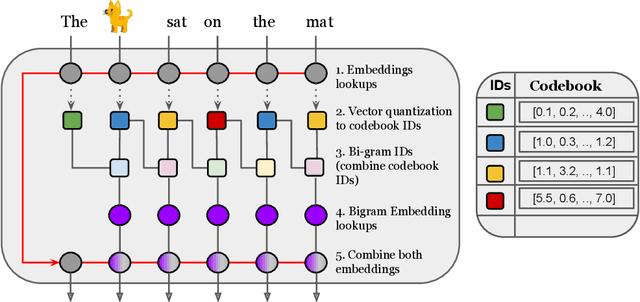
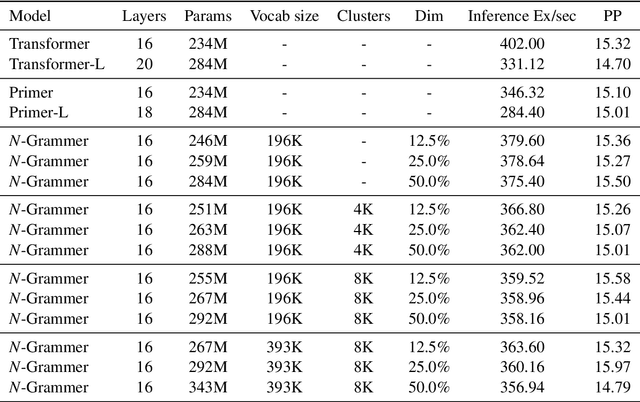
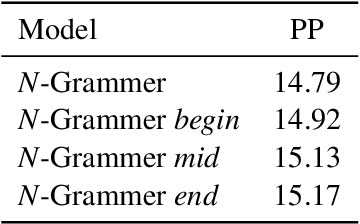
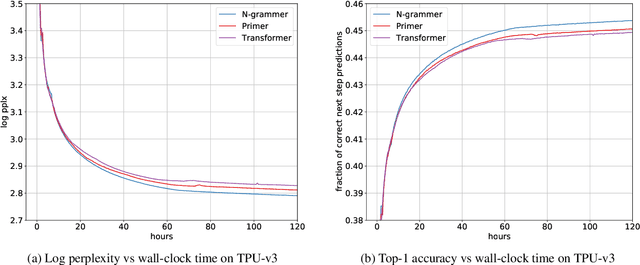
Abstract:Transformer models have recently emerged as one of the foundational models in natural language processing, and as a byproduct, there is significant recent interest and investment in scaling these models. However, the training and inference costs of these large Transformer language models are prohibitive, thus necessitating more research in identifying more efficient variants. In this work, we propose a simple yet effective modification to the Transformer architecture inspired by the literature in statistical language modeling, by augmenting the model with n-grams that are constructed from a discrete latent representation of the text sequence. We evaluate our model, the N-Grammer on language modeling on the C4 data-set as well as text classification on the SuperGLUE data-set, and find that it outperforms several strong baselines such as the Transformer and the Primer. We open-source our model for reproducibility purposes in Jax.
MIDI-DDSP: Detailed Control of Musical Performance via Hierarchical Modeling
Dec 17, 2021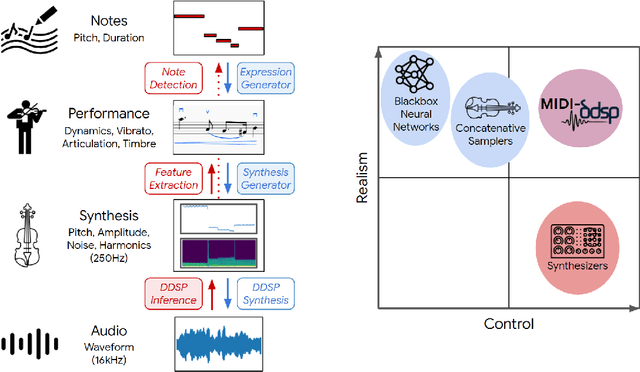
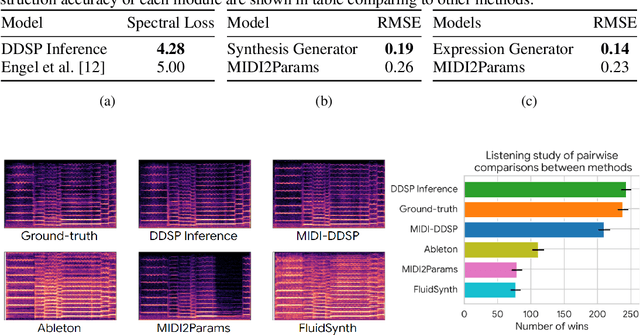
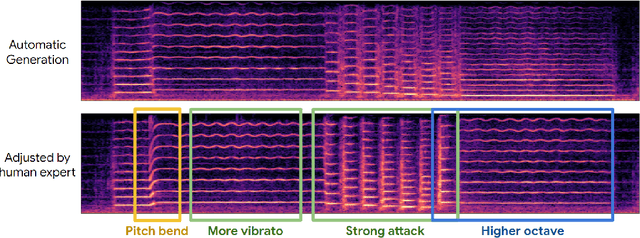

Abstract:Musical expression requires control of both what notes are played, and how they are performed. Conventional audio synthesizers provide detailed expressive controls, but at the cost of realism. Black-box neural audio synthesis and concatenative samplers can produce realistic audio, but have few mechanisms for control. In this work, we introduce MIDI-DDSP a hierarchical model of musical instruments that enables both realistic neural audio synthesis and detailed user control. Starting from interpretable Differentiable Digital Signal Processing (DDSP) synthesis parameters, we infer musical notes and high-level properties of their expressive performance (such as timbre, vibrato, dynamics, and articulation). This creates a 3-level hierarchy (notes, performance, synthesis) that affords individuals the option to intervene at each level, or utilize trained priors (performance given notes, synthesis given performance) for creative assistance. Through quantitative experiments and listening tests, we demonstrate that this hierarchy can reconstruct high-fidelity audio, accurately predict performance attributes for a note sequence, independently manipulate the attributes of a given performance, and as a complete system, generate realistic audio from a novel note sequence. By utilizing an interpretable hierarchy, with multiple levels of granularity, MIDI-DDSP opens the door to assistive tools to empower individuals across a diverse range of musical experience.
Sequence-to-Sequence Piano Transcription with Transformers
Jul 19, 2021



Abstract:Automatic Music Transcription has seen significant progress in recent years by training custom deep neural networks on large datasets. However, these models have required extensive domain-specific design of network architectures, input/output representations, and complex decoding schemes. In this work, we show that equivalent performance can be achieved using a generic encoder-decoder Transformer with standard decoding methods. We demonstrate that the model can learn to translate spectrogram inputs directly to MIDI-like output events for several transcription tasks. This sequence-to-sequence approach simplifies transcription by jointly modeling audio features and language-like output dependencies, thus removing the need for task-specific architectures. These results point toward possibilities for creating new Music Information Retrieval models by focusing on dataset creation and labeling rather than custom model design.
 Add to Chrome
Add to Chrome Add to Firefox
Add to Firefox Add to Edge
Add to Edge